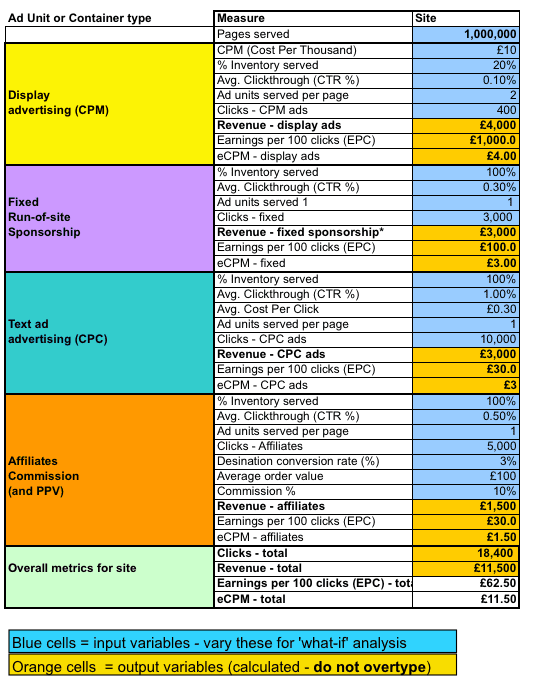Choosing your online revenue model – Page 2 of 2 – StartupSmart
Affiliate revenue
Merchants, application providers and utilities sell the products and services of other companies through their site and generate income by charging a commission on the product purchase price. For example, Amazon pay their affiliates 5-10% of the cover price of books displayed on their website.
Subscriber data access
Where customers have given their permission, the contact details gathered by these sites can be valuable to third parties who are willing to pay the site owner to email and advertise to their customer-base.
Donations
Are another potentially substantial form of revenue, but are often only used by social media, community based, or news sites where members donate funds to cover the cost of running the site.
Key considerations
Here are my top five tips for adopting the right revenue model for your online start-up:
1. Think about your revenue model during your business planning stages
When considering your target markets think about their current purchasing habits, what’s important to them, what they will pay for and how they want to pay for it.
While there may be demand for your product or service, their willingness to purchase and what they are willing to pay may vary greatly from what you can expect. This makes it important to research and understand all your options and consider how they suit your intended business.
2. Test and gather feedback
While planning is important, you don’t really know how customers will respond until you start interacting with them and the best way to do this is to soft launch, test, gather feedback and refine things.
During planning you might identify two or more revenue models that could suit your business. Test them to match the best ones for each customer segment and which options are more profitable.
3. Don’t lock yourself into just one model
You don’t have to choose one revenue model and just run with that. Multiple models might allow you to gain greater reach across different customer segments or allow you to capture customers you wouldn’t have otherwise.
Some customers might not want to initially be locked into a commitment, but will commit if given the chance to experience interacting with you at low or no cost for their first transaction.
4. Get one model working really well first
Start-ups have a lot on their plate and you can’t try to be everything to everyone up front. There are a lot of revenue model options outlined above and you could see the potential to maximize your revenue using multiple models.
The best approach is to test, get one model working really well, and when it’s providing you with a nice steady income stream, then turn your attention to testing and implementing others.
5. Keep tracking your results
Customer preferences and habits change over time and as they experience different online businesses and technology evolves, you need to keep up to date and remain profitable.
Each time you change a process, add a new product or service, or try a new sales and marketing activity, monitor the impact it’s having on your business and identify any early warning signs or changes that might signal an opportunity for you to take advantage of.
Marc Peskett is a partner of MPR Group, a Melbourne based firm that specialises in providing business advisory, tax, outsourced accounting and grants and funding services, to fast growing technology and innovation businesses.
You can follow Marc on Twitter @mpeskett

